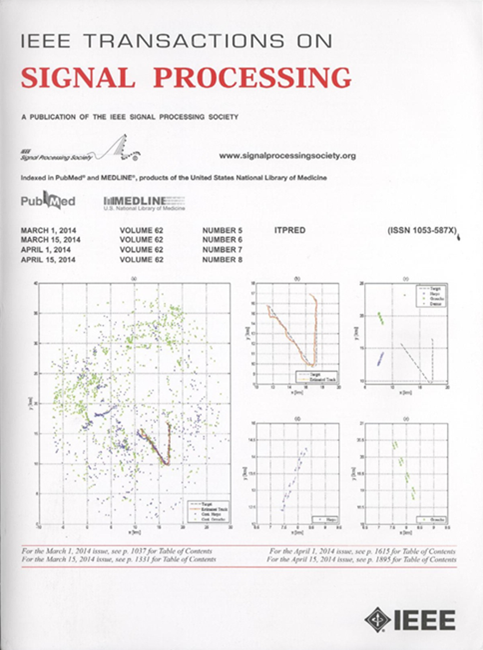和差分共阵视角下的四阶稀疏阵列设计
IF 5.8
2区 工程技术
Q1 ENGINEERING, ELECTRICAL & ELECTRONIC
引用次数: 0
摘要
基于四阶差分共阵(DCA)设计的稀疏阵列可以获得更高的均匀自由度。然而,大多数现有的四阶稀疏阵列并没有充分利用与四阶DCA密切相关的二阶和共阵列(SCA)的特性。本文从和差共阵的角度提出了一种四阶稀疏阵列设计方案,该方案可由两个任意阵列生成,称为发生器阵列。一旦确定了两个发电机阵列,所有传感器的位置就可以用一个封闭的表达式得到。如果发生器阵列的二阶SCA和DCA具有无孔的长连续段,则通过该方案得到的派生稀疏阵列可以实现大量的udof。此外,发电机阵列的其他特性也可以被继承,如抗互耦或传感器故障的鲁棒性。仿真结果证明了该设计在不同应用中的性能。本文章由计算机程序翻译,如有差异,请以英文原文为准。
Fourth-Order Sparse Array Design From a Sum-Difference Co-Array Perspective
Sparse arrays designed based on fourth-order difference co-array (DCA) can achieve significantly higher uniform degrees-of-freedom (uDOFs). However, most existing fourth-order sparse arrays do not fully utilize the properties of the second-order sum co-array (SCA) that is also closely related to the fourth-order DCA. In this paper, a fourth-order sparse array design scheme from the sum-difference co-array perspective is proposed, which can be generated by two arbitrary arrays called generator arrays. Once the two generator arrays are determined, all sensor positions can be obtained with a closed-form expression. If the second-order SCA and DCA of the generator arrays have long consecutive segments without holes, the derived sparse array obtained through this scheme can achieve a large number of uDOFs. Besides, other characteristics of the generator arrays can also be inherited, such as robustness against mutual coupling or sensor failures. Simulation results are provided to demonstrate the performance of the proposed design in different applications.
求助全文
通过发布文献求助,成功后即可免费获取论文全文。
去求助
来源期刊

IEEE Transactions on Signal Processing
工程技术-工程:电子与电气
CiteScore
11.20
自引率
9.30%
发文量
310
审稿时长
3.0 months
期刊介绍:
The IEEE Transactions on Signal Processing covers novel theory, algorithms, performance analyses and applications of techniques for the processing, understanding, learning, retrieval, mining, and extraction of information from signals. The term “signal” includes, among others, audio, video, speech, image, communication, geophysical, sonar, radar, medical and musical signals. Examples of topics of interest include, but are not limited to, information processing and the theory and application of filtering, coding, transmitting, estimating, detecting, analyzing, recognizing, synthesizing, recording, and reproducing signals.
 求助内容:
求助内容: 应助结果提醒方式:
应助结果提醒方式:


